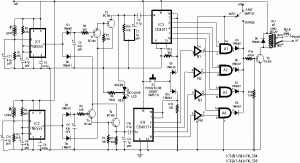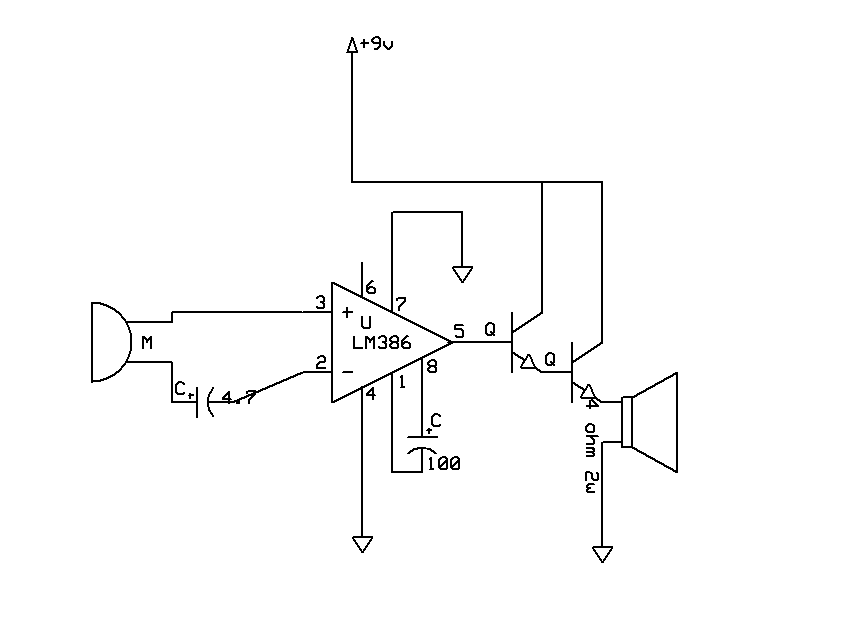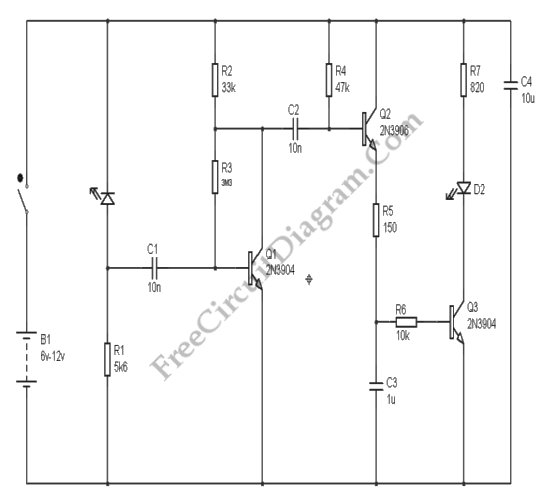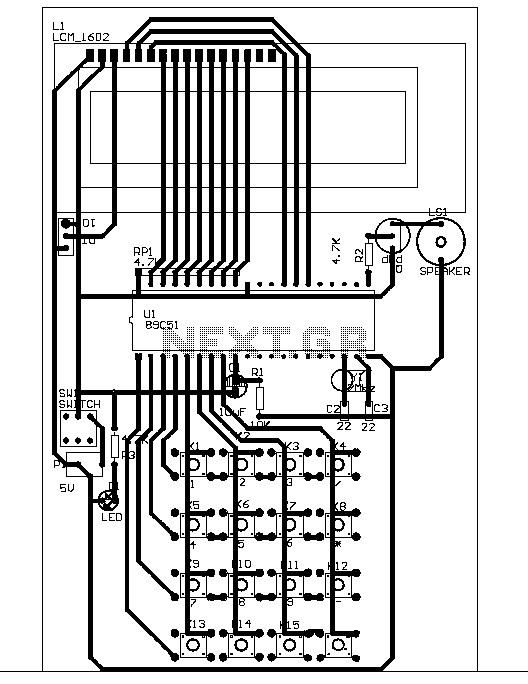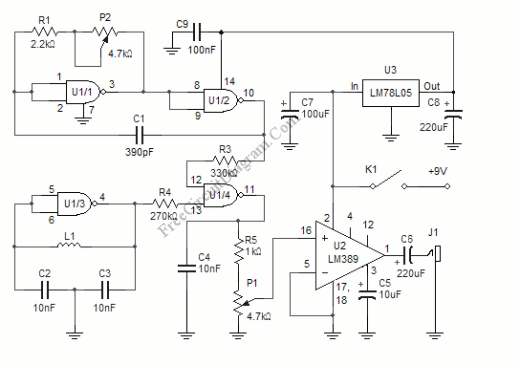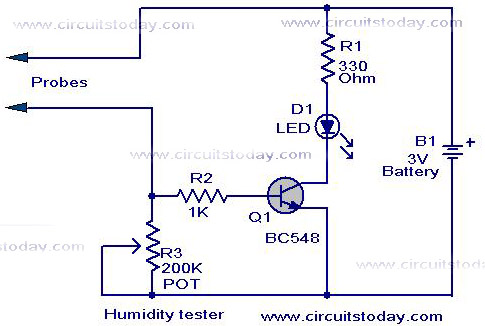
Simple Humidity Sensor
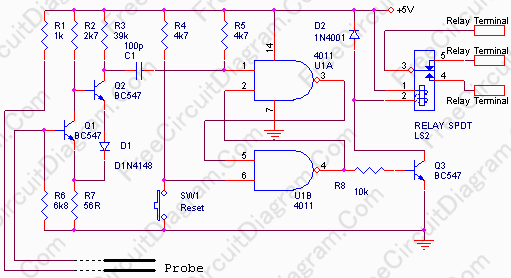
A humidity sensor can be utilized to provide an alert for boat leakage or to notify when books are at risk of being damaged due to heavy rain affecting a compromised roof.
Humidity sensors are essential devices that measure the moisture level in the environment. In practical applications, they can serve various purposes, including leak detection in boats and monitoring indoor conditions to protect valuable items, such as books, from water damage.
In a typical circuit design, a humidity sensor can be integrated with a microcontroller to process the readings and trigger alerts. The sensor outputs an analog or digital signal corresponding to the humidity level. This signal can be interfaced with an analog-to-digital converter (ADC) if the microcontroller does not have built-in ADC capabilities.
For boat leakage detection, the humidity sensor should be placed in a location where water ingress is most likely to occur. When the humidity level exceeds a predefined threshold, indicating potential leakage, the microcontroller can activate an alarm or send a notification to a connected device, such as a smartphone or a dedicated display.
In the case of monitoring indoor environments, the sensor can be installed near windows or roofs that are prone to leaks. If the humidity levels rise unexpectedly, the system can alert the user before significant damage occurs, allowing for timely intervention.
Power supply considerations should also be made, with options for battery operation or connection to a mains supply, ensuring reliability in various conditions. Additionally, implementing a Wi-Fi or Bluetooth module can enhance the system's functionality by allowing remote monitoring and alerts.
Overall, the integration of a humidity sensor into a monitoring system provides an effective solution for early detection of water-related issues, safeguarding both property and possessions.You can use a humidity sensor to give an alert of boat leakage, or when your books start being flooded by heavy rain attack on your broken roof, or anything you. 🔗 External reference
Humidity sensors are essential devices that measure the moisture level in the environment. In practical applications, they can serve various purposes, including leak detection in boats and monitoring indoor conditions to protect valuable items, such as books, from water damage.
In a typical circuit design, a humidity sensor can be integrated with a microcontroller to process the readings and trigger alerts. The sensor outputs an analog or digital signal corresponding to the humidity level. This signal can be interfaced with an analog-to-digital converter (ADC) if the microcontroller does not have built-in ADC capabilities.
For boat leakage detection, the humidity sensor should be placed in a location where water ingress is most likely to occur. When the humidity level exceeds a predefined threshold, indicating potential leakage, the microcontroller can activate an alarm or send a notification to a connected device, such as a smartphone or a dedicated display.
In the case of monitoring indoor environments, the sensor can be installed near windows or roofs that are prone to leaks. If the humidity levels rise unexpectedly, the system can alert the user before significant damage occurs, allowing for timely intervention.
Power supply considerations should also be made, with options for battery operation or connection to a mains supply, ensuring reliability in various conditions. Additionally, implementing a Wi-Fi or Bluetooth module can enhance the system's functionality by allowing remote monitoring and alerts.
Overall, the integration of a humidity sensor into a monitoring system provides an effective solution for early detection of water-related issues, safeguarding both property and possessions.You can use a humidity sensor to give an alert of boat leakage, or when your books start being flooded by heavy rain attack on your broken roof, or anything you. 🔗 External reference
